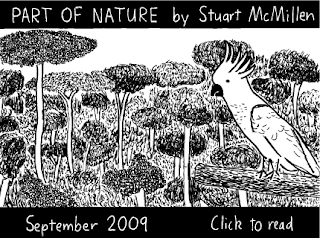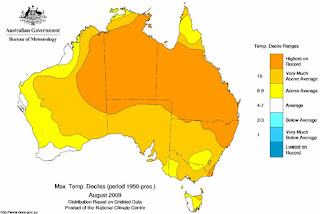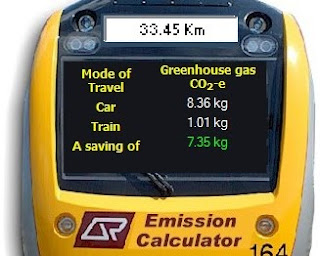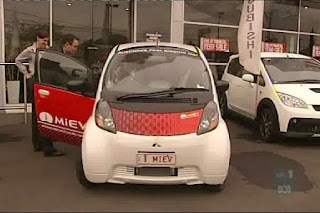
I've met Stuart a few times in 'real life' and (aswell as being a very amiable fellow) he does some very thoughtful cartoons. It occurred to me that i've never shown these to you - so i'm rectifying that now.

 Like any paper it covers weather, sports, politics, business, movies and celebrities. It has comic strips - and news on Pamela Anderson.
Like any paper it covers weather, sports, politics, business, movies and celebrities. It has comic strips - and news on Pamela Anderson.This could be, and should be, a real New York Post... Climate change is the biggest threat civilization has ever faced, and it should be in the headlines of every paper, every day until we solve the problem.
 Yellow and orange mean warmer than average. Deep orange indicates record temperature. White is average, and (if you can see any) blue means cooler than average.
Yellow and orange mean warmer than average. Deep orange indicates record temperature. White is average, and (if you can see any) blue means cooler than average.
 It seems everyone's talking about the dust storms - including the scientists on the IPCC. The ABC tells me that the IPCC report predicts an increase in dust storms with climate change, as the conditions that cause them increase.
It seems everyone's talking about the dust storms - including the scientists on the IPCC. The ABC tells me that the IPCC report predicts an increase in dust storms with climate change, as the conditions that cause them increase.


 In ability to meet greenhouse reduction targets, Australia is at the back of the field, with only Saudia Arabia, Russia and Turkey behind us. For ability to do business in a low-carbon world, Australia was last of the industrialised countries.
In ability to meet greenhouse reduction targets, Australia is at the back of the field, with only Saudia Arabia, Russia and Turkey behind us. For ability to do business in a low-carbon world, Australia was last of the industrialised countries.This is something which puts our jobs and living standards at risk if we don't get on with economy-wide measures to change our economy to cut carbon pollution and to increase our productivity.Climate Institute report: download


And what we're seeing in Australia is billions of dollars being poured down the drain in order to satisfy the demands of the coal industry, which is an incredibly wealth industry, which is not prepared to make most of the investments itself.


